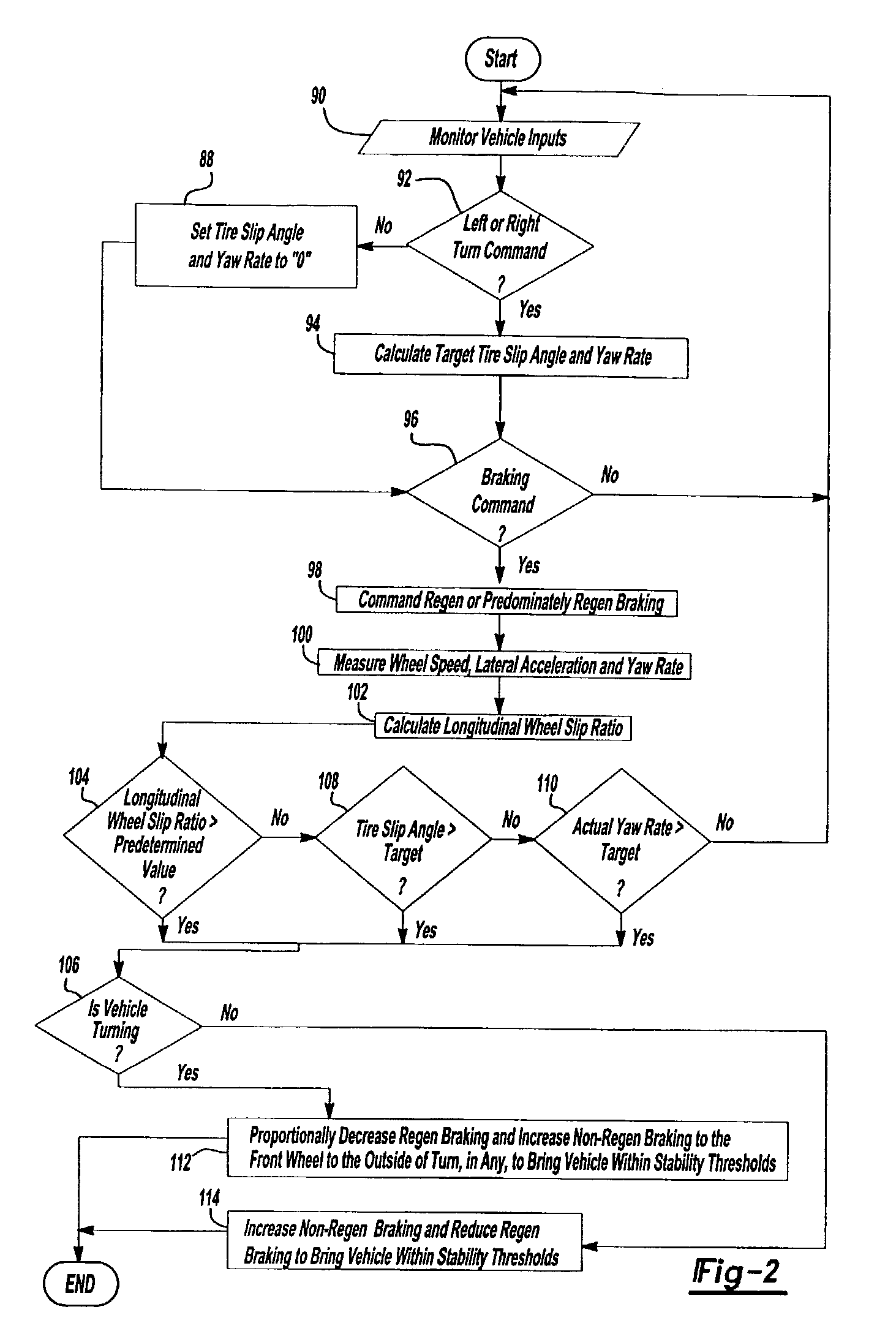Independent braking and controllability control method and system for a vehicle with regenerative braking
a control method and braking technology, applied in the direction of braking systems, braking components, electric propulsion mounting, etc., can solve the problems of degrading controllability, unbalanced braking, degrading vehicle controllability, etc., to reduce understeer and oversteer, improve controllability of a vehicle, and not significantly reduce energy recovery
- Summary
- Abstract
- Description
- Claims
- Application Information
AI Technical Summary
Benefits of technology
Problems solved by technology
Method used
Image
Examples
Embodiment Construction
[0023]The present invention relates to electrically propelled vehicles such as electric vehicles (EVs), hybrid electric vehicles (HEVs), and fuel cell electric vehicles (FCEVs) that have a regenerative braking system. The present invention is a system to continuously control braking and controllability for a vehicle with regenerative braking. FIG. 1 demonstrates just one possible configuration, specifically a parallel / series hybrid electric vehicle (split) configuration with rear wheel drive. The present invention can easily be modified to adapt to a front wheel drive vehicle.
[0024]In a basic HEV, a planetary gear set 20 mechanically couples a carrier gear 22 to an engine 24 via a one-way clutch 26. The planetary gear set 20 also mechanically couples a sun gear 28 to a generator motor 30 and a ring (output) gear 32. The generator motor 30 also mechanically links to a generator brake 34 and is electrically linked to a battery 36. A traction motor 38 is mechanically coupled to the rin...
PUM
 Login to View More
Login to View More Abstract
Description
Claims
Application Information
 Login to View More
Login to View More - R&D
- Intellectual Property
- Life Sciences
- Materials
- Tech Scout
- Unparalleled Data Quality
- Higher Quality Content
- 60% Fewer Hallucinations
Browse by: Latest US Patents, China's latest patents, Technical Efficacy Thesaurus, Application Domain, Technology Topic, Popular Technical Reports.
© 2025 PatSnap. All rights reserved.Legal|Privacy policy|Modern Slavery Act Transparency Statement|Sitemap|About US| Contact US: help@patsnap.com



